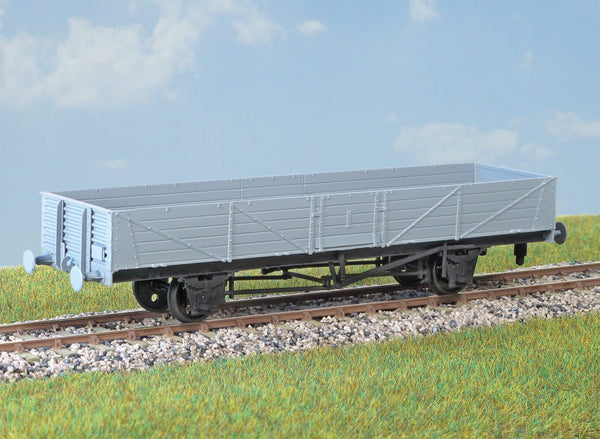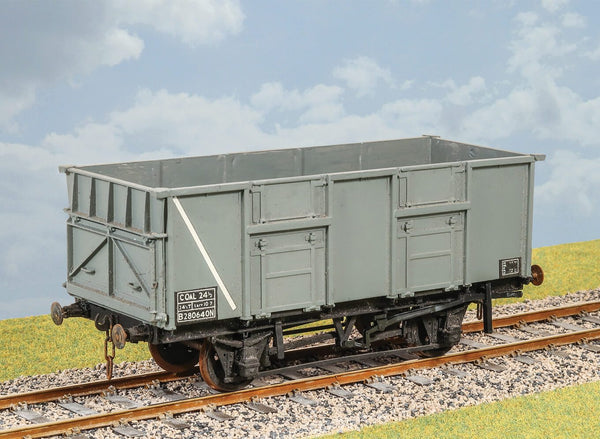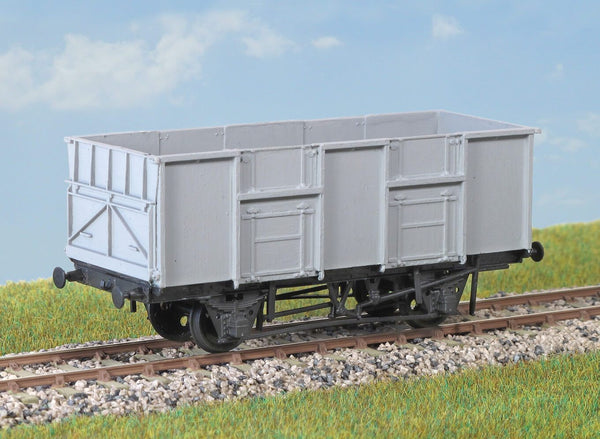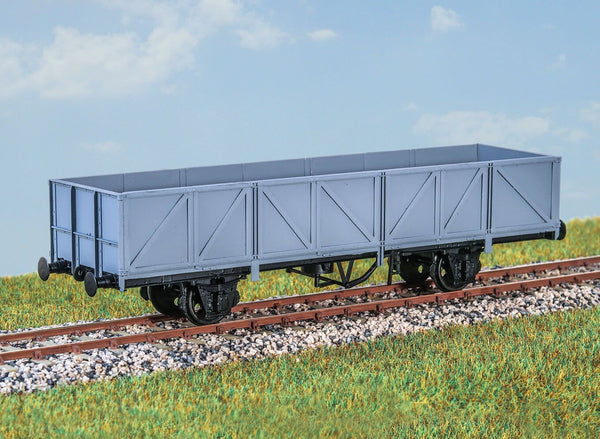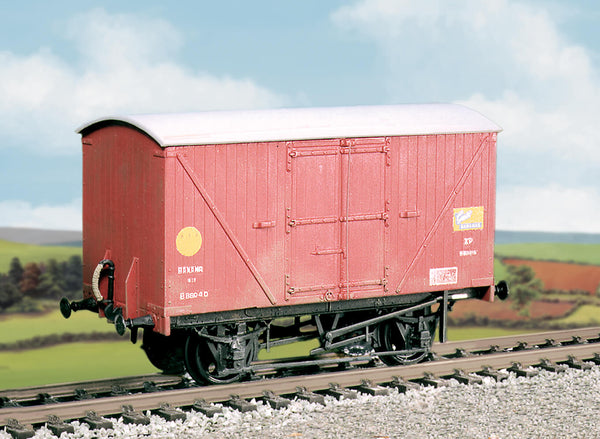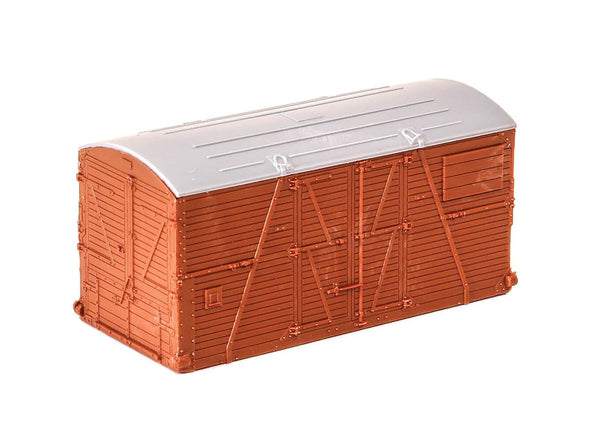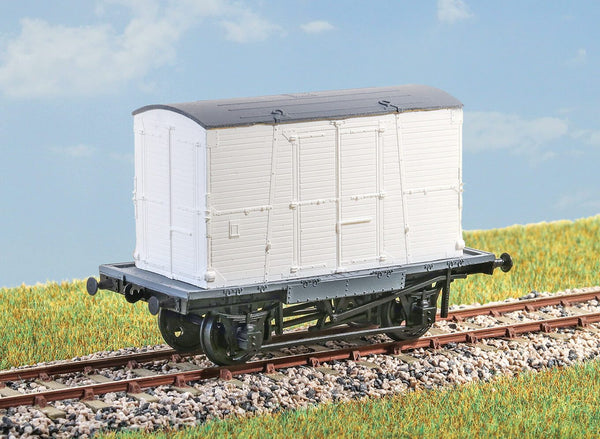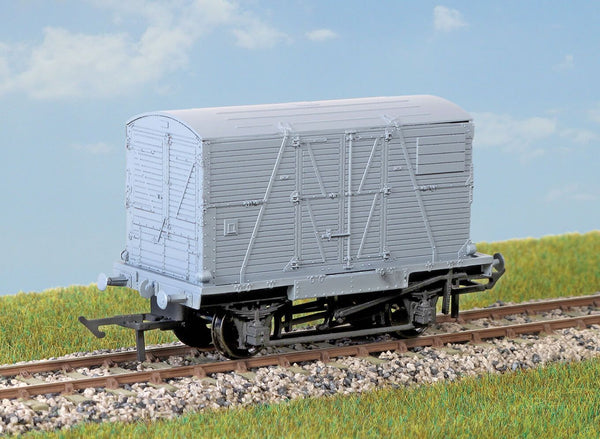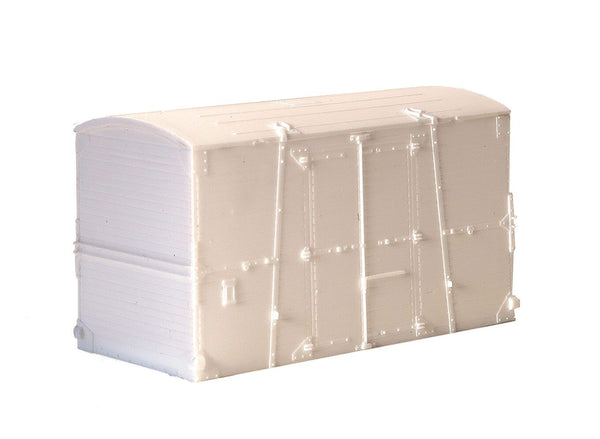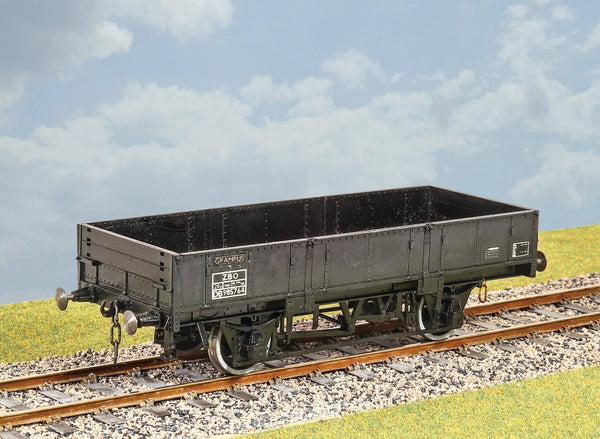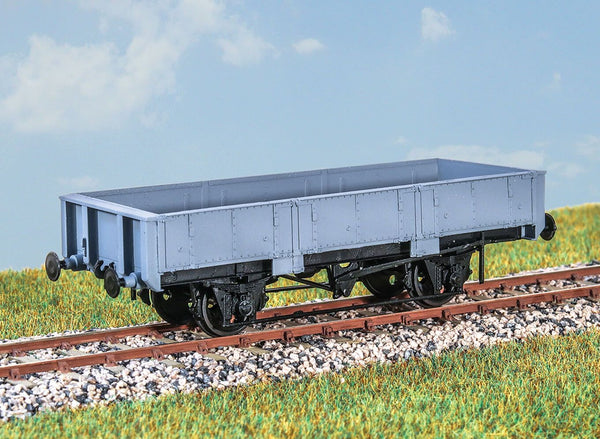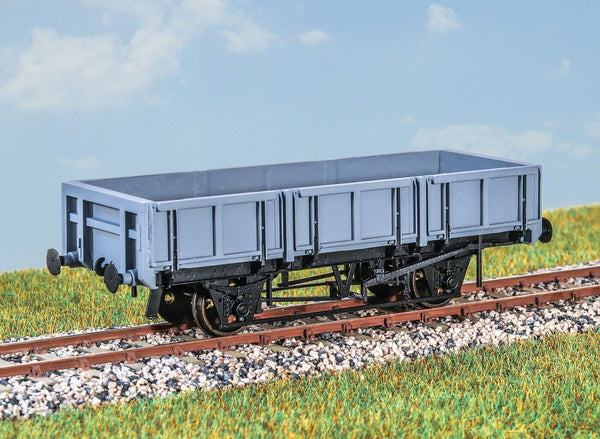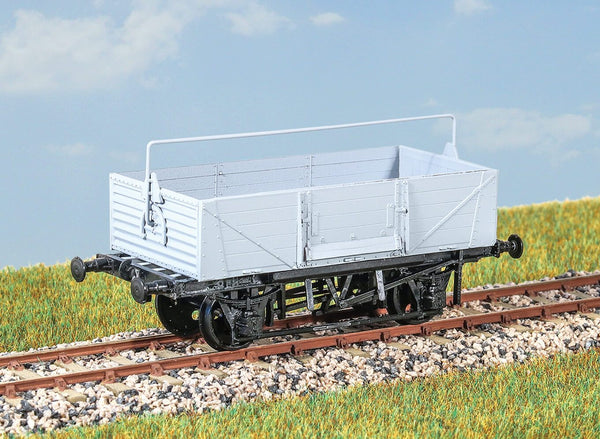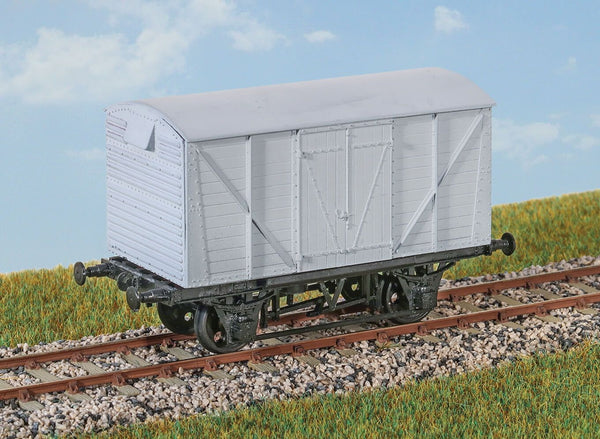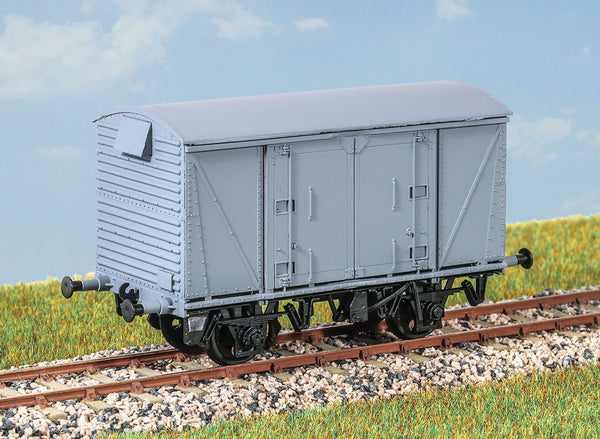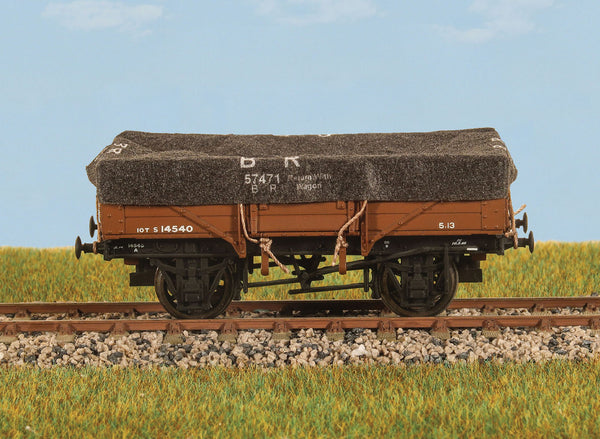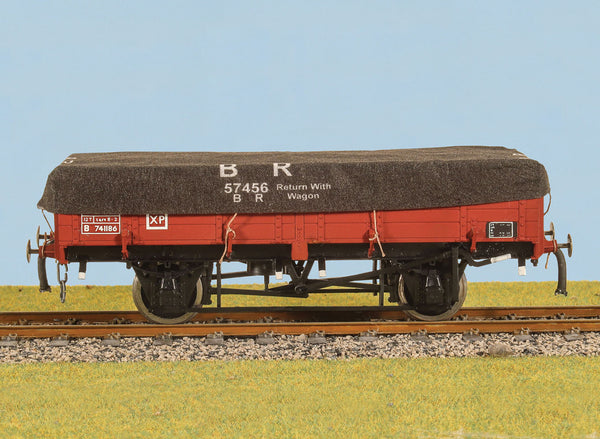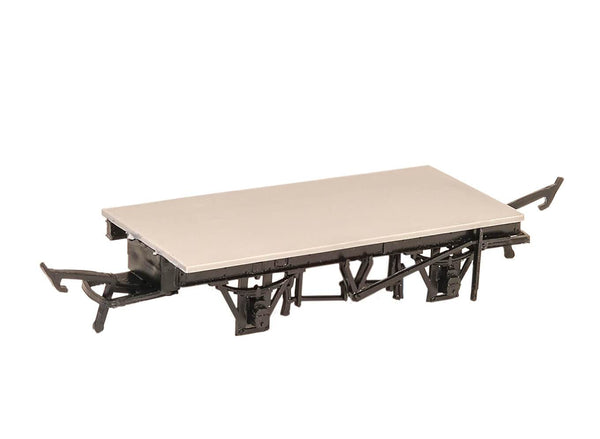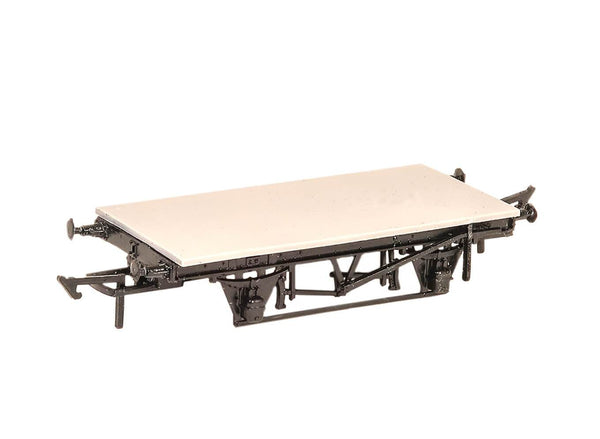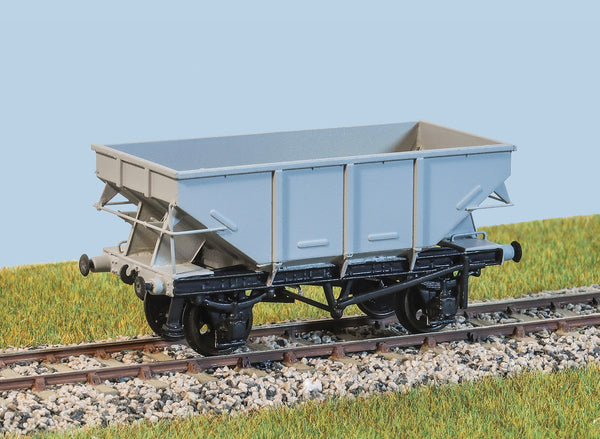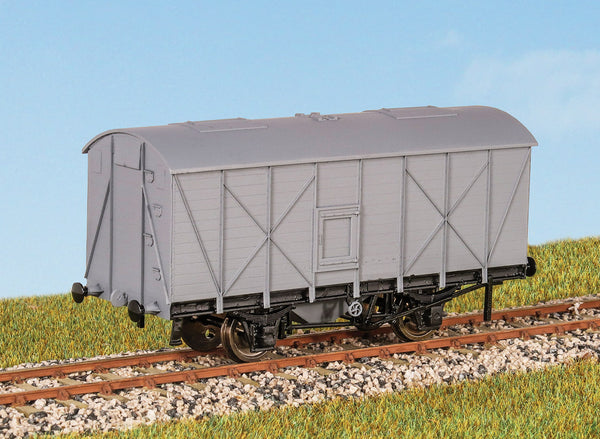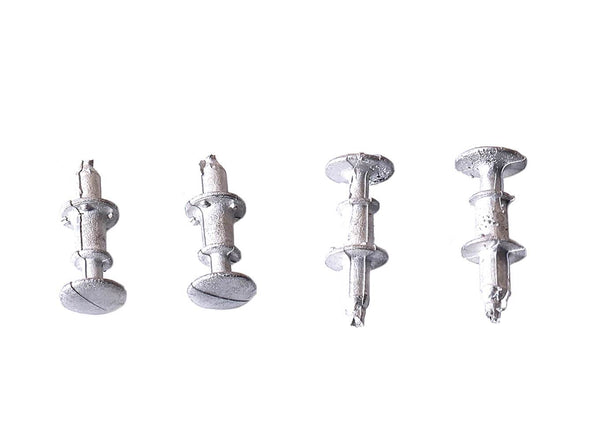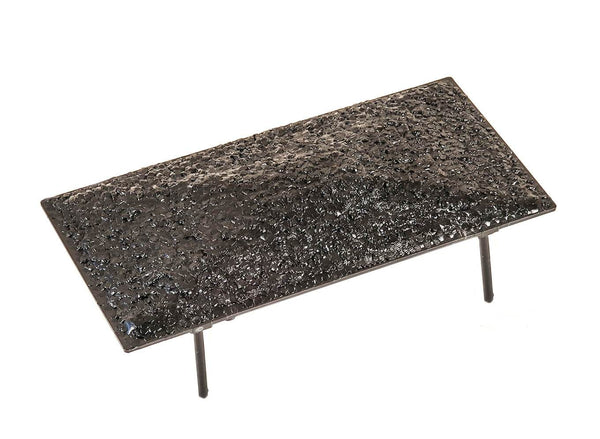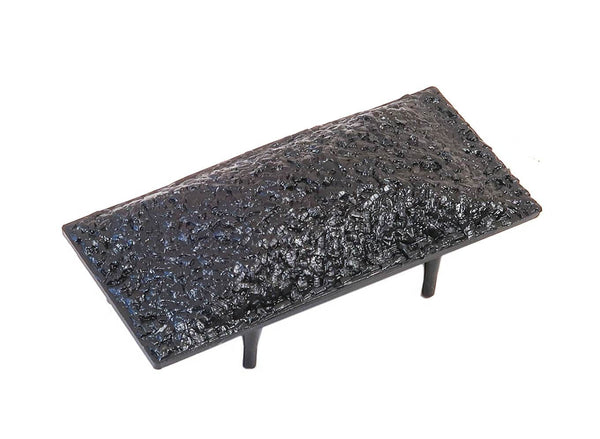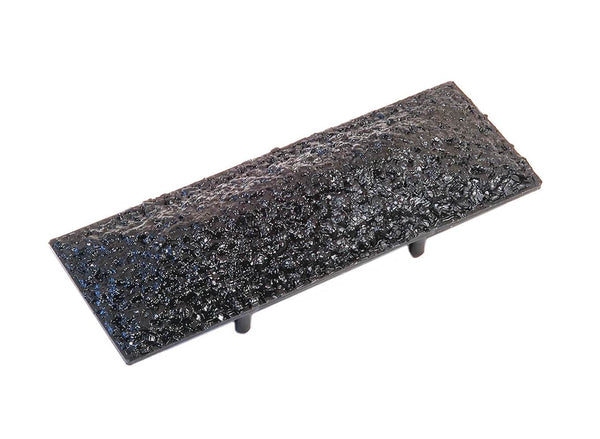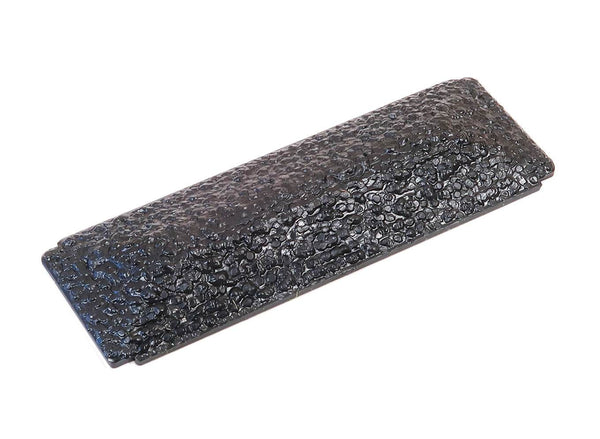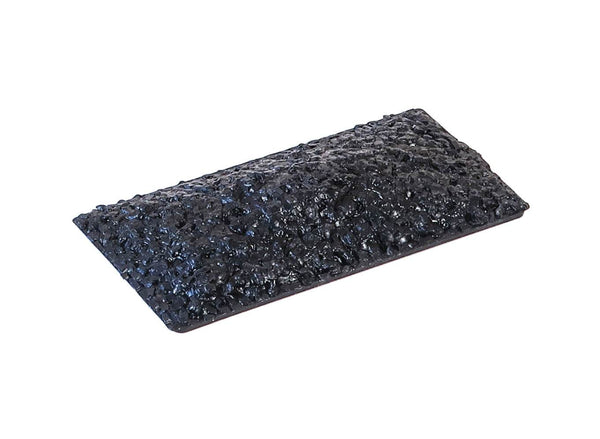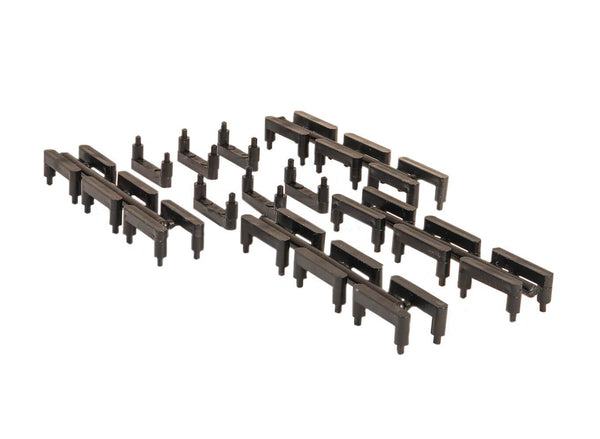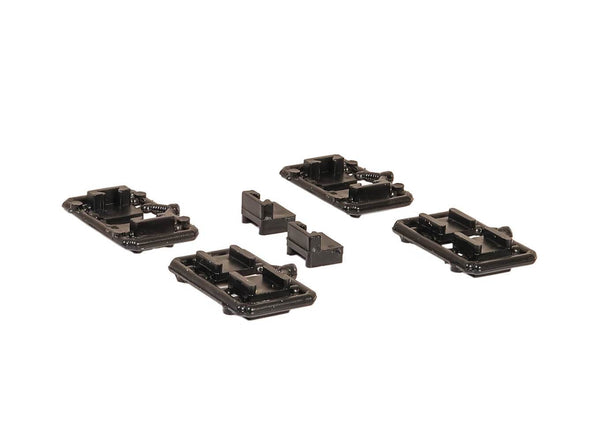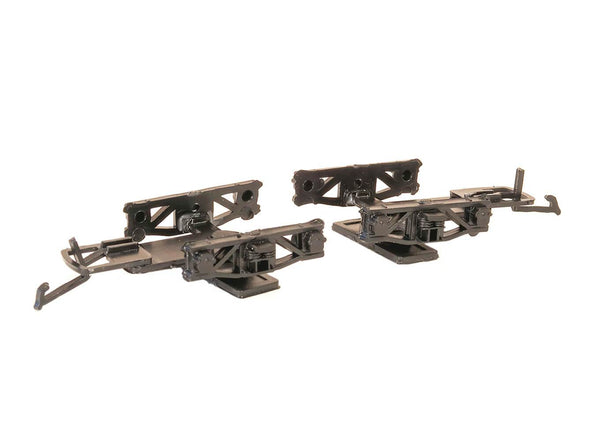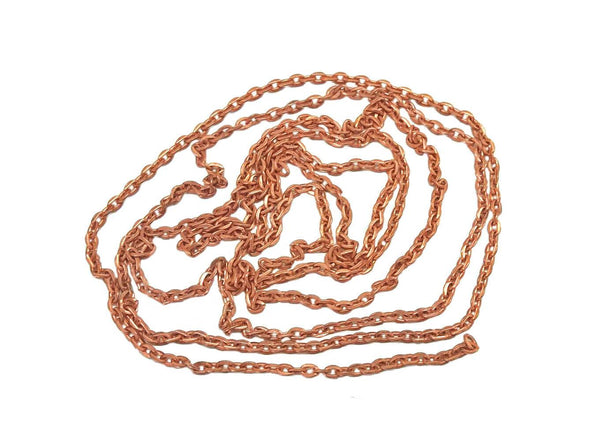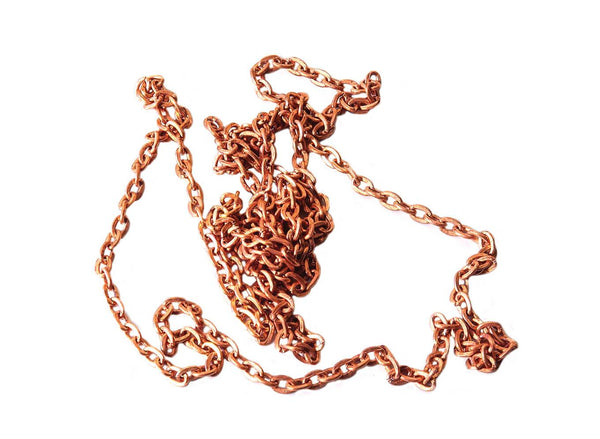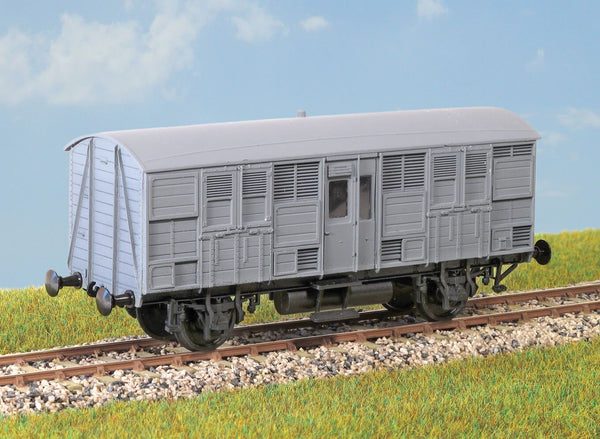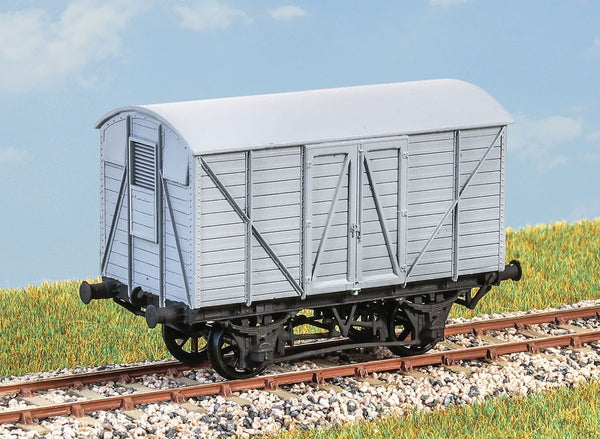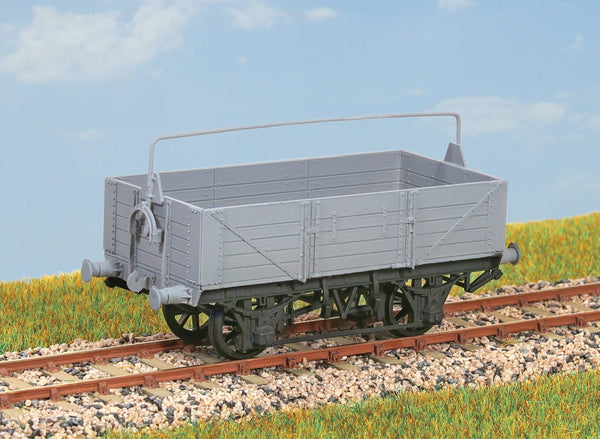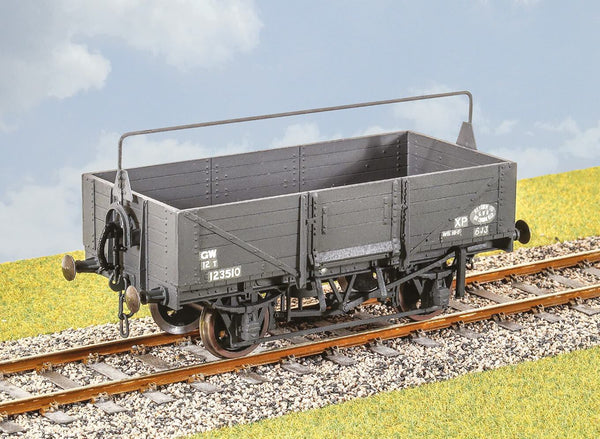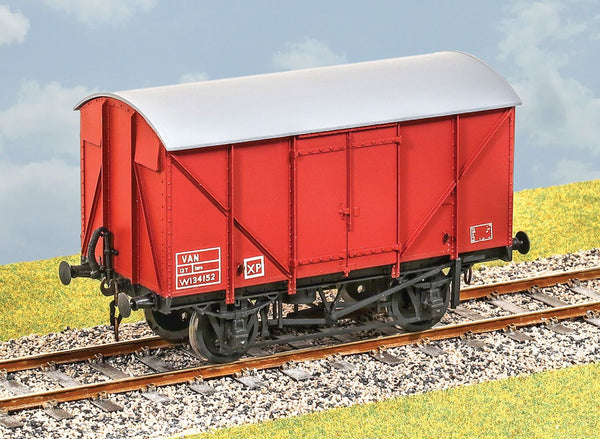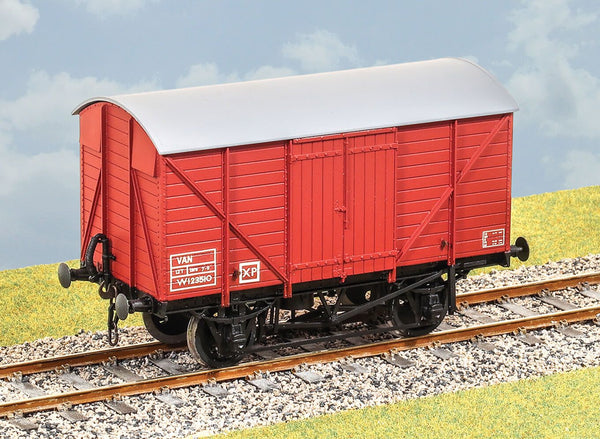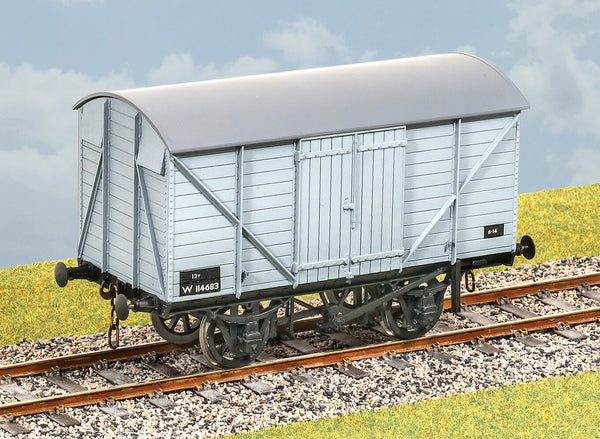BROWSE PECO PRODUCTS
Browse through our complete product portfolio.
261 Products Found
BR 22ton Tube Wagon
2350 of these wagons (diagram 1/448) were built between 1954 and 1961 to carry long tubes and bulky general merchandise. Most were withdrawn by the 1980s, but some survive in infrastructure use. These finely moulded plastic wagon kits come complete with pin point axle wheels and bearings. Glue and paint will be required, along with appropriate transfers. Additional parts to enable the vehicle to be modelled incorporating modifications made to the prototypes during their working life are included where appropriate.
BR 24.5ton Mineral Wagon
2,150 of this design were built in 1953 – 1956. Used to carry coal for steel works, power stations and engines sheds. Were intended as the standard mineral wagon, but were too large for many customers. Withdrawn by 1982. Transfers for BR 1950s – 1970s. These finely moulded plastic wagon kits come complete with pin point axle wheels and bearings, 3 link couplings and transfers. This kit is supplied with pre-coloured moulded parts although painting can improve the appearance. Additional parts to enable the vehicle to be modelled incorporating modifications made to the prototypes during their working life are included where appropriate.
BR 24¬? ton Coal Wagon
Over 2000 of these wagons (diagram 1/115) were built in 1953-1956 to carry coal to power stations and steel works. Withdrawn by 1982. These finely moulded plastic wagon kits come complete with pin point axle wheels and bearings. Glue and paint will be required, along with appropriate transfers. Additional parts to enable the vehicle to be modelled incorporating modifications made to the prototypes during their working life are included where appropriate.
BR Ale Pallet Wagon
The mid 1960s saw a small fleet of these (diagram 1/028) rebuilt from tube wagons to carry beer casks between breweries and distribution depots. Traffic ended in the late 70s but some survived as barrier wagons. These finely moulded plastic wagon kits come complete with pin point axle wheels and bearings. Glue and paint will be required, along with appropriate transfers. Additional parts to enable the vehicle to be modelled incorporating modifications made to the prototypes during their working life are included where appropriate.
BR Banana Van
300 of these wagons were built between 1952 and 1954. They were originally fitted with steam heating, but this was later removed. Used mainly by the companies Geest and Fyffes, these vans could be part of a mixed train or a 'block load' on their way from the shipping dock. Transfers are included; glue and paints are required to complete this model.
BR BD Container
Diagram 3/050; a Conflat wagon or road vehicle load. As supplied with Conflat A Container Wagon kit PC52.
BR CCT Parcels Van
This BR built wagon (diagram 3101) had plywood body sides but had timber doors for extra strength as with the SR version. 150 were built between 1951 and 1955. Withdrawal took place in the early 1980s.
These finely moulded plastic wagon kits come complete with pin point axle wheels and bearings. Glue and paint will be required, along with appropriate transfers. Additional parts to enable the vehicle to be modelled incorporating modifications made to the prototypes during their working life are included where appropriate.
BR Conflat Container Wagon
4500 of these wagons (diagram 1/067) were built in 1955/56 purely to carry containers. The FM carried frozen meat and was widely used in the 1950s and 1960s. These finely moulded plastic wagon kits come complete with pin point axle wheels and bearings. Glue and paint will be required, along with appropriate transfers. Additional parts to enable the vehicle to be modelled incorporating modifications made to the prototypes during their working life are included where appropriate.
BR Conflat Container Wagon
‘Conflat A’ Container Wagon with BD container (diagram 3/050) 4500 were built in 1955/56 purely to carry containers. The BD was the most common general merchandise container on BR. Over 9000 were built to this diagram.
These finely moulded plastic wagon kits come complete with pin point axle wheels and bearings. Glue and paint will be required, along with appropriate transfers . Additional parts to enable the vehicle to be modelled incorporating modifications made to the prototypes during their working life are included where appropriate.
BR FM Container
Diagram 3/201; a Conflat wagon or road vehicle load. As supplied with Conflat A Container Wagon kit PC46.
BR Grampus Ballast Wagon
Over 4,000 built from 1951 to 1959, with some in service into the 21st century. Used for carrying ballast and engineer’s materials. Featured fold-down sides for ease of access. Includes etched brass BR region plaques and transfers for early and post-TOPS BR. These finely moulded plastic wagon kits come complete with pin point axle wheels and bearings, 3 link couplings and transfers. This kit is supplied with pre-coloured moulded parts although painting can improve the appearance. Additional parts to enable the vehicle to be modelled incorporating modifications made to the prototypes during their working life are included where appropriate.
BR Grampus Engineers Wagon
Over 700 of these vacuum braked Grampus (diagram 1/572) were built around 1960 to carry track materials. This kit can also make the air braked Rudd, built from the early 1990s. These finely moulded plastic wagon kits come complete with pin point axle wheels and bearings. Glue and paint will be required, along with appropriate transfers. Additional parts to enable the vehicle to be modelled incorporating modifications made to the prototypes during their working life are included where appropriate.
BR Rudd 21ton Ballast Wagon
Built on ex-hopper chassis, these wagons carry mainly waste ballast. Drop side doors are a feature of this design. These finely moulded plastic wagon kits come complete with pin point axle wheels and bearings. Glue and paint will be required, along with appropriate transfers. Additional parts to enable the vehicle to be modelled incorporating modifications made to the prototypes during their working life are included where appropriate.
BR Shock Absorbing Open Wagon
Introduced 1955-1958, these wagons (diagram 1/050) carried fragile traffic from earthenware pipes to whisky barrels. Our model features adjustable body and tarpaulin rail. These finely moulded plastic wagon kits come complete with pin point axle wheels and bearings. Glue and paint will be required, along with appropriate transfers. Additional parts to enable the vehicle to be modelled incorporating modifications made to the prototypes during their working life are included where appropriate.
BR Shock Absorbing Wagon
Introduced 1953 - 1956, these vans (diagram 1/209) carried fragile traffics such as biscuits, whisky and china and lasted in service until the late 1970s. These finely moulded plastic wagon kits come complete with pin point axle wheels and bearings. Glue and paint will be required, along with appropriate transfers. Additional parts to enable the vehicle to be modelled incorporating modifications made to the prototypes during their working life are included where appropriate.
BR Van 'Vanwide' with Air Brake
VEA ex Vanwide (Air Brake and FAT19 Suspension) In the late 1970s several hundred Vanwides were upgraded with air brakes and improved suspension for use in Speedlink trains. Used into the 1990s. These finely moulded plastic wagon kits come complete with pin point axle wheels and bearings. Glue and paint will be required, along with appropriate transfers. Additional parts to enable the vehicle to be modelled incorporating modifications made to the prototypes during their working life are included where appropriate.
BR Wagon Tarpaulin
BR Wagon Tarpaulin
O Scale BR wagon tarpaulin, produced from a material that convincingly replicates the texture and look of canvas tarpaulins once commonly used on open wagons, to protect the contents underneath. Each product contains 3 tarpaulins.
BR/RCH 9 foot Wagon Chassis kit (Unfitted) - Double Brake
Kit and scratch builders accessory; as included in the 16 ton Mineral Wagon kit PC22.
BR/RCH 9 foot Wagon Chassis kit (Unfitted) - Morton Brake
Kit and scratch builders accessory; as included in the 16 ton Mineral Wagon kit PC21.
British Railways 13 Ton Steel Body Hopper (LNER)
Over 2,600 of these wagons were built for use on British Railways, between 1949 and 1953. They became synonymous with the North East Region, where coal drop staithes were commonly provided in the station goods yard, so a bottom-discharge hopper was the obvious type to use. Although intended for transporting coal, in later life they became more nomadic around the UK and were used for carrying other materials such as stone and sand. The last examples lingered in service until the early 1980s.
British Railways Bulk Grain Wagon Kit (LNER)
Around 100 of these vans were built by the LNER between 1921 and 1936 for the transportation of grain, initially from the Port of Hull. In time their use became more widespread, often finding work transporting barley from Lincolnshire to the maltings in Scotland. The remaining wagons were retired in the mid-1970s.
Our new kit really is all-new. Brand new tooling producing some very fine plastic mouldings. In addition to that the kit includes brass bearings, fine scale metal wheels and NEM pockets for the tension lock couplers included. A set of waterslide decals for both the LNER and BR periods are included. Assembly is really straight forward aided by the clear and helpful instructions. The resulting model is one that would make a fine addition to any layout, and from a retailer's point of view there is the added attraction of being able to sell multiple kits given that modellers would likely require a rake of these wagons!
Buffers NBR (White Metal)
Kit and Scratch builder's accessory. Pack contains sufficient parts for 4 Buffers
Buffers RCH (White Metal)
Kit and Scratch builder's accessory. Pack contains sufficient parts for 4 Buffers
Buffers RCH End Door
Kit and Scratch builder's accessory. Pack contains sufficient parts for 4 Buffers
Coal Loads for 16ton Mineral Wagon
Pack of 3 0 Gauge coal loads suitable for Parkside PS30/31 and 32; also Peco W-607 Wagon kits.
Coupling Mounting Blocks
15 pairs for Bachmann (TM) 36-025 and 36-026 Mk2 Mini type Couplings.
Coupling Mounting Blocks for Bachmann (TM) Couplings
Pack of 10 for 36-027 Mk2 Couplings, NEM shaft (cranked) with pocket.
Diamond Frame Wagon Bogies
Kit and scratch builders accessory, as supplied with Bogie Sulphate Wagon kit PC20. Wheels not included.
Fine Chain 13 links per inch
Useful as a load or for securing loads, or for cranes, hoists etc.
Fine Chain 9 links per inch
Useful as a load or for securing loads, or for cranes, hoists etc.
GWR 'Beetle' Prize Cattle Wagon
(Diagram 109) Introduced in the 1920s to carry valuable cattle with their attendants, they were mainly seen on passenger trains until the 1960s. These finely moulded plastic wagon kits come complete with pin point axle wheels and bearings. Glue and paint will be required, along with appropriate transfers. Additional parts to enable the vehicle to be modelled incorporating modifications made to the prototypes during their working life are included where appropriate.
GWR 'Fruit D' Van
This was the final design of the GWR Fruit Van (diagram Y11) of which 50 were built in 1939-1941. More were built by BR in the 1950s and some were in service into the 1970s. These finely moulded plastic wagon kits come complete with pin point axle wheels and bearings. Glue and paint will be required, along with appropriate transfers. Additional parts to enable the vehicle to be modelled incorporating modifications made to the prototypes during their working life are included where appropriate.
GWR 00 12ton China Clay Wagon
500 of these wagons (diagram O13) were built in 1913. Used for short run traffic in Cornwall and to carry china clay to potteries and paper mills. Final withdrawal took place in the late 1950s. These finely moulded plastic wagon kits come complete with pin point axle wheels and bearings. Glue and paint will be required, along with appropriate transfers. Additional parts to enable the vehicle to be modelled incorporating modifications made to the prototypes during their working life are included where appropriate.
GWR 10ton Banana Van
The GWR introduced a fleet of these vans (diagram Y4) in the early 1920s. These vans could still be seen in service into the 1950s. These finely moulded plastic wagon kits come complete with pin point axle wheels and bearings. Glue and paint will be required, along with appropriate transfers. Additional parts to enable the vehicle to be modelled incorporating modifications made to the prototypes during their working life are included where appropriate.
GWR 10ton Goods Van
10 ton Goods Van ‘Mink/Mink A’ V12, V14 and V16 Built between 1907 and 1927. Used for general goods traffic throughout the British railway system. In service until around 1960, later in departmental use. These finely moulded plastic wagon kits come complete with pin point axle wheels and bearings. Glue and paint will be required, along with appropriate transfers. Additional parts to enable the vehicle to be modelled incorporating modifications made to the prototypes during their working life are included where appropriate.
GWR 10ton Gunpowder Van
These gunpowder vans (diagram Z2) were built between 1913 and 1926 to carry gunpowder and other explosives. Examples lasted until around 1960. These finely moulded plastic wagon kits come complete with pin point axle wheels and bearings. Glue and paint will be required, along with appropriate transfers. Additional parts to enable the vehicle to be modelled incorporating modifications made to the prototypes during their working life are included where appropriate.
GWR 10ton Open Goods Wagon
(Diagram O11/15) Over 12000 were built between 1909 and 1922. 011 had hand brake only and 015 wagons had the vacuum brake. Examples lasted into the 1950s. These finely moulded plastic wagon kits come complete with pin point axle wheels and bearings. Glue and paint will be required, along with appropriate transfers. Additional parts to enable the vehicle to be modelled incorporating modifications made to the prototypes during their working life are included where appropriate.
GWR 12/13ton Open Goods Wagon
Dia. O32: over 10,000 unfitted built (1933 – 1940); O33: 948 built with vacuum brake and tarpaulin rails. Most lasted into the 1970s, with some featuring fabricated steel strengthening. The kit covers all variants. Transfers for GWR and BR. These finely moulded plastic wagon kits come complete with pin point axle wheels and bearings, 3 link couplings and transfers. This kit is supplied with pre-coloured moulded parts although painting can improve the appearance. Additional parts to enable the vehicle to be modelled incorporating modifications made to the prototypes during their working life are included where appropriate.
GWR 12ton Covered Goods Wagon
Plywood body construction came about as a result of a shortage of wooden planks at the end of the last war. A total of 1,100 vans were built, 350 with only a hand brake (diagram V37), which eventually had vacuum brakes retro-fitted. They lasted into the 1970s. Transfers for GWR and BR.These finely moulded plastic wagon kits come complete with pin point axle wheels and bearings, 3 link couplings and transfers. This kit is supplied with pre-coloured moulded parts although painting can improve the appearance. Additional parts to enable the vehicle to be modelled incorporating modifications made to the prototypes during their working life are included where appropriate.
GWR 12ton Covered Goods Wagon
Dia. V24: hand brake only (1933 – 1943); V23: vacuum brakes (1933 - 1941); V26, known as ‘PARTO’ was as a V23 with internal partitions (1935 – 1939). Many lasted into the 1970s. Transfers for GWR and BR. These finely moulded plastic wagon kits come complete with pin point axle wheels and bearings, 3 link couplings and transfers. This kit is supplied with pre-coloured moulded parts although painting can improve the appearance. Additional parts to enable the vehicle to be modelled incorporating modifications made to the prototypes during their working life are included where appropriate.
GWR 12ton Covered Goods Wagon
950 wagons of this design were built between 1929 and 1933. Withdrawal took place in the early 1960s. These wagons were regarded as ‘common user’ so would have been found across the whole network. Transfers for GWR and BR. These finely moulded plastic wagon kits come complete with pin point axle wheels and bearings, 3 link couplings and transfers. This kit is supplied with pre-coloured moulded parts although painting can improve the appearance. Additional parts to enable the vehicle to be modelled incorporating modifications made to the prototypes during their working life are included where appropriate.










